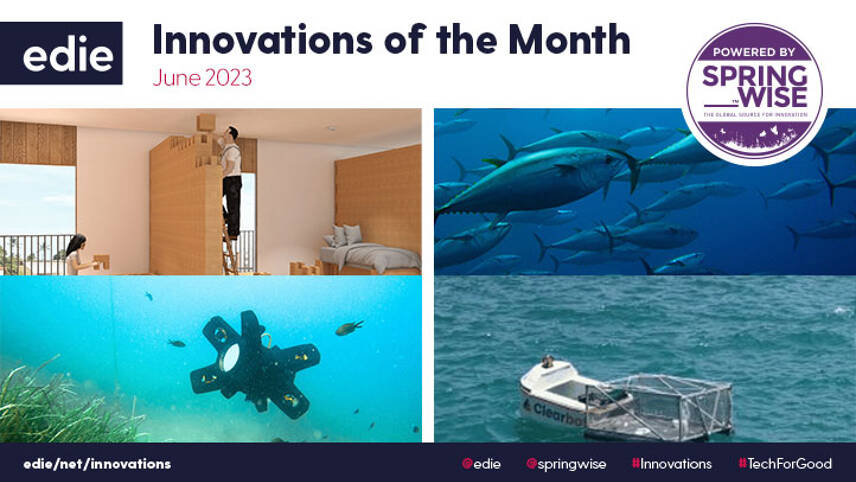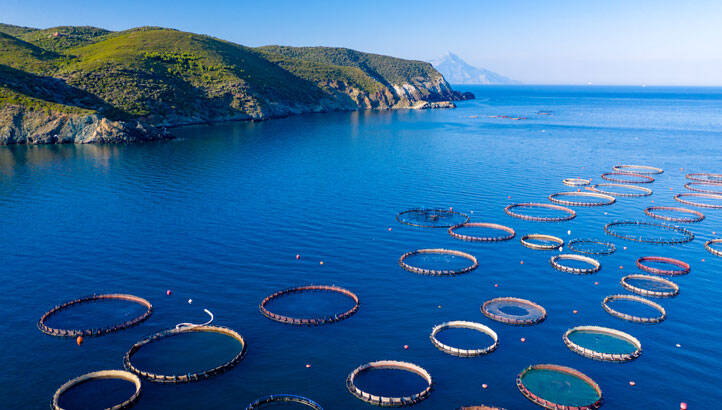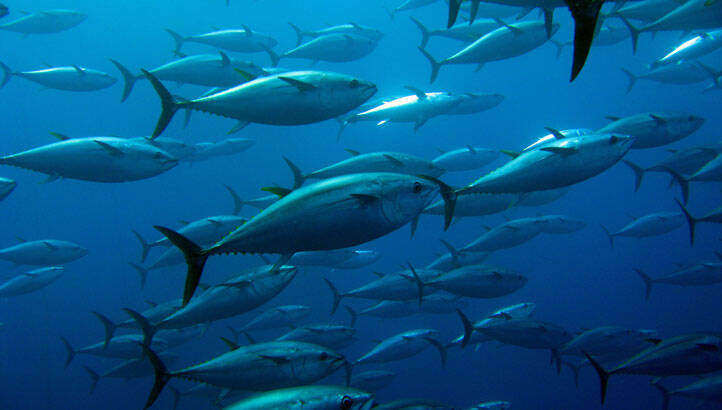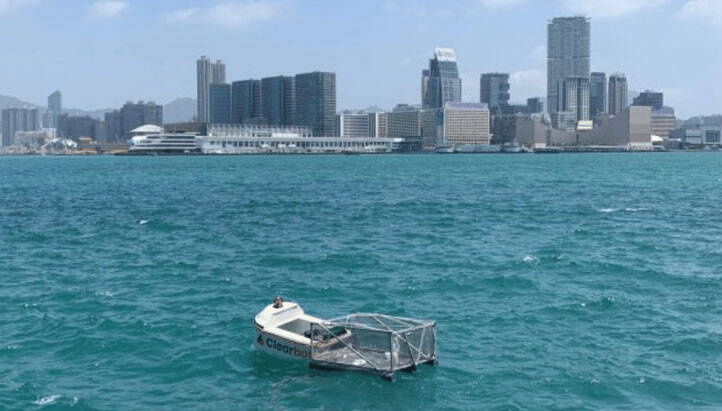Register for free and continue reading
Join our growing army of changemakers and get unlimited access to our premium content

On 8 June, the world celebrated World Oceans Day. This UN-led initiative exists to highlight the important role that oceans play in our everyday lives – both as a direct provider of resources and as an invaluable element of the world’s climate system and biosphere.
Raising awareness of the need to protect marine habitats has never been more important. Today, around the world, oceans are under threat; fish stocks have been exploited almost to exhaustion, and ocean habitats despoiled. In fact, half of coral reefs have already disappeared and 92% of seagrass meadows – which capture carbon 35 times faster than tropical rainforests – have been lost over the past century.
This year’s iteration of World Oceans Day is particularly prescient as the North Atlantic is currently experiencing an anomalous heat event, under which it has clocked up its highest ever recorded sea surface temperature. And given this context, this month’s innovations have a clear blue tinge.
The first two featured solutions are deploying the latest developments in artificial intelligence and robotics to monitor and glean valuable information on the state of the aquatic environment, while the next two are seeking to alleviate the pressure placed on oceans from overfishing and pollution respectively.
Elsewhere, back on dry land, our fifth innovation has found a way to dramatically increase the lifespan of lead-acid batteries, while our final innovation is making DIY fun again with Lego-like modular blocks made of sustainable cork.
Robots to monitor underwater habitats
Photo: uWare
Climate change, along with direct human activities like overfishing, is having a devastating impact on ocean biodiversity. Mapping underwater environments provides experts with baseline data with which they can monitor changes and plan mitigation efforts. Now, Belgian robotics company uWare is helping gather this data with autonomous underwater robots.
Called the uOne, the startup’s robot inspects both built and natural environments, providing essential data to organisations with underwater assets, as well as those working to conserve and repair marine habitats. The robots are programmed for consistent, continuous monitoring of a certain set of geolocal parameters, running for up to four hours at a time and remaining stable even in harsh weather conditions.
Deployed from the shore or a boat, the system does not require users to be in the water. Monitoring routes are saved and repeated as regularly as required, with bespoke analyses of new locations or highly specific locations added whenever needed.
The initial gathering of data provides high-resolution imagery and depth and temperature readings, and other types of information tracking can be added to the drone’s capabilities depending on the environment being surveyed.
AI-powered fish behaviour trackers
Stock image
For billions of people around the world, fish is a major source of protein. But, today, 90% of the world’s wild fish stocks are fully exploited, overexploited or depleted. As the world’s demand for protein grows, US-based startup Tidal believes it will be essential to expand ocean farming. However, at present, fish farmers do not have access to the tools and objective information necessary to keep their fish, and the environment they swim in, healthy.
To tackle this, Tidal has developed a platform that combines machine learning and novel underwater perception hardware to give aquaculture companies new levels of visibility into marine eco-systems and the aquatic relationships that sustain them.
The startup’s artificial intelligence has been trained on eight billion underwater observations from operational video recordings that amount to 900 terabytes of data in total. The insights generated by the AI help fish farmers make more intelligent decisions. For example, they can optimise feeding times to coincide with the hunger levels of the fish to reduce wasted feed. Better decision-making can, in turn, reduce the carbon emissions associated with the industry.
Tidal recently announced a partnership with technology giant Cognizant to scale up its technology. By harnessing Cognizant’s software, systems, and expertise in integration, the startup will be able to offer its services to the aquaculture market more broadly, whereas it has previously only supported a select number of pilot partners.
Floating onshore tuna farms
Stock image
The International Seafood Sustainability Foundation’s 2023 report on the status of the world’s stock of fish assessed the annual global tuna catch to be around 4.8 million metric tonnes. With many markets completely reliant on wild-caught tuna, aquaculture is scrambling to provide a reliable, scalable alternative to wild tuna fishing.
Germany’s Next Tuna is building one possible solution in the form of the world’s first land-based source of Atlantic bluefin tuna (ABT). The company’s goal is to transform the tuna fish food industry into a circular, sustainable economy.
Using a recirculating aqua system (RAS), the company’s floating farms are protected from heat increases in the water, algal blooms, predators, and pollution. Waste from the system is collected for use as fuel or in seaweed production, and the farm itself is largely solar-powered. Next Tuna plans to offer three products and services. Juvenile ABT will be grown for producers to use in their own commercial farms. The RAS will also be sold for use with other species of fish, and the entire system will be available as a bespoke aquaculture-as-a-service offering.
Next Tuna is currently constructing a commercial farm in Spain. Once finished, the farm should have a sufficient supply of eggs to be running at full levels of production based only on farmed tuna and no longer requiring the use of any wild-caught juveniles. The company is working with the Aquaculture Stewardship Council (ASC) to gain a sustainability certification for the farmed tuna.
Self-driving, pollution-cleaning ocean robots
Image: ClearBot
There are an estimated 5.25 trillion pieces of plastic waste in our oceans, affecting millions of marine animals and human health. But now, one startup, Clearbot, has created autonomous technology to help save our oceans and rivers.
What started as a student project to help Indonesian surfers clean up waterways soon turned into the Clearbot Neo, an electric-powered and solar-charged autonomous marine bot that can be used to clear pollution, transport cargo, and assist in surveys and rescue operations. The team combines sensors and computers to create the self-driving electric bots, which are designed for optimal mobility, perception, and agility.
As a tool to tackle pollution and invasive plants, the Clearbot Neo is both cost-effective and environmentally friendly. The company claims that one bot can clear up to 15 litres of oil and 200 kilogrammes of floating rubbish every day. And, with the help of AI and cameras, the boats can also analyse the collected waste, which enables companies and governments to better understand what ends up in waterways and when. This, in turn, helps them tackle this waste more effectively.
Clearbot also acts as a delivery vehicle that can move 200 kilogrammes of cargo across water, giving vessel managers a cheaper, easier, and emissions-free alternative to launching boats to deliver produce to their ships.
And because the bot can autonomously manoeuvre through complicated and potentially dangerous routes while being controlled remotely, Clearbot’s technology is suitable for surveillance tasks and assisting in waterway emergencies.
Regenerated batteries with triple the lifespan
Stock image
The rechargeable lead-acid battery was first invented in 1859. Compared to modern rechargeable batteries, it has relatively low energy density, but is inexpensive and simple to manufacture, making it a popular option for uses ranging from off-grid energy systems to telecoms equipment and automobile ignitions.
Lead-acid batteries have a relatively short lifespan, however, meaning they are not great for the circular economy. But now, an Amsterdam-based startup is working to give them a new lease of life. Revive Battery has developed a battery regeneration process that uses carefully controlled electrical impulses to break through sulphur crystals. This revives the batteries without damaging them.
The startup claims this process can be used two to three times on each battery and restores up to 95% of the batteries’ original capacity. Even better, the process can be performed on-site and includes monitoring, enabling users to access and track their battery performance in real time.
According to the startup, the process emits less CO2 than traditional battery regeneration methods. It also keeps the battery intact and requires just 2.1 kilowatt hours (kWh) of energy to revive each battery. The company claims to have already revived more than 11,000 batteries in India and Africa.
Modular building with cork bricks
Image: CorkBrick
Living is more dynamic now than it every has been before, thanks to the growing popularity of working-from-home post-lockdown and to the growing short-term rental market.
Noticing a gap in the market for a way to build structures at home with easy modularity and flexibility, a father and daughter decided to take matters into their own hands. And so, they founded Portugal-based Corkbrick to help to reinvent the spaces we live in, without a high carbon footprint.
Inspired by Lego, Corkbrick is a real-size modular system with interlocking cork blocks, or ‘brocks’. There are seven of these brocks, two that are foundational, four that are directional, and one that is a filler. Together they can be used to create dynamic furniture, furnishings, and structures. The eco-friendly, sturdy, heat-resistant, and soundproof blocks can be assembled and disassembled easily, without the need for tools, screws, or glue.
For the founders, cork was a natural choice for their product. It has a minimal impact on the environment because the harvesting of cork does not require the harming or cutting down of trees. Once the bark is extracted, a new layer of cork regrows, making it a renewable resource – and each cork tree typically lives for more than 250 years.
Springwise is the global innovation intelligence platform for positive and sustainable change. With a growing database of 11,000+ innovations, we are the place of record for innovation that matters. Springwise.com.








Should not “sulphur crystals” read “sulphate crystals” ?